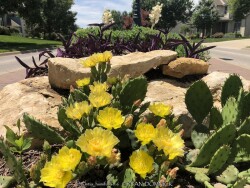
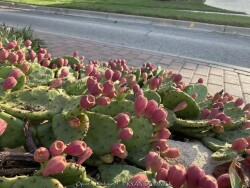
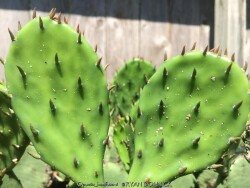
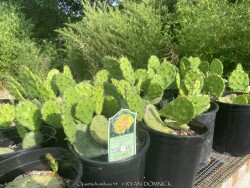
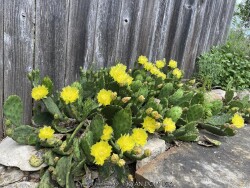
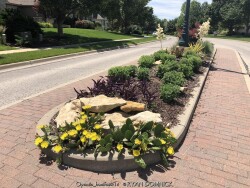
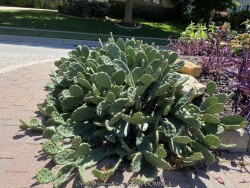
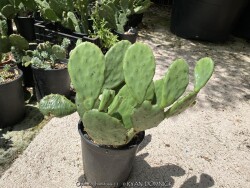
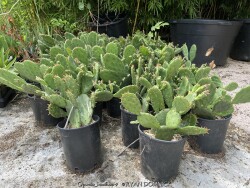
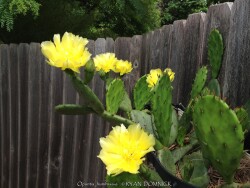

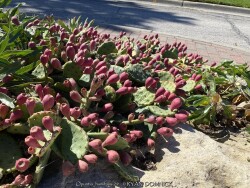
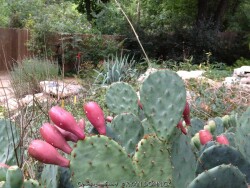
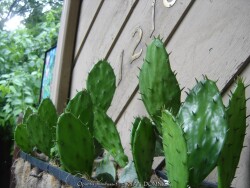

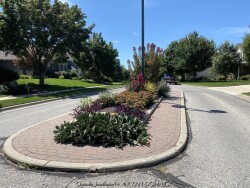
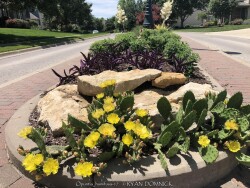
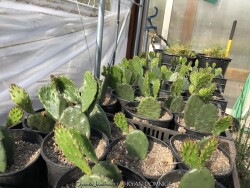
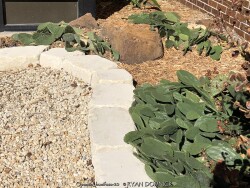
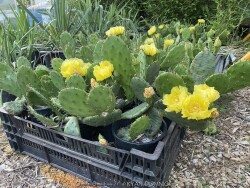

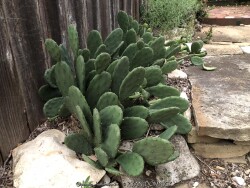
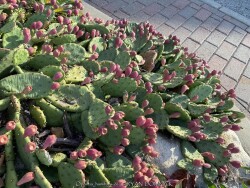


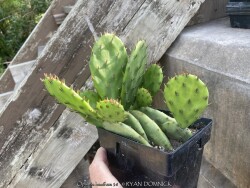
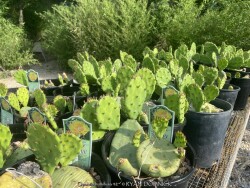
Plant Min Zone: 4a
Plant Max Zone: 8b
Sunlight: All Day Full Sun, Full Sun, Part Sun, Shade
Water / Rainfall: Very Low, Low, Average
Soil Quality: Poor, Average
Bloom Season: Early Summer, Summer
Flower Color: Yellow
Berry / Fruit Color: Magenta, Maroon
Spring Foliage Color: Green
Summer Foliage Color: Green
Fall Foliage Color: Green
Evergreen Foliage: Yes
Winter Interest: Some
Scented Flowers: No
Drought Tolerance: High
Wet-Feet Tolerance: Low
Humidity Tolerance: Low, Medium
Wind Tolerance: High
Poor Soil Tolerance: Sandy Soils, Rocky Soils, Alkaline Soils (high PH)
Height: 0.75' - 1'
Width: 1' - 3'
Growth Rate: Medium
Service Life: Extremely long: over 20 years
Maintenance Need: Almost Zero Maintenance
Spreading Potential: Low
Yearly Trimming Tips: Yuccas and Cacti Need No Trimming Except to Remove the Dead Flower Stalk.
Plant Grouping Size: Specimen Planting of 1-3, Small Grouping of 3-5
Best Side of House: South Exposure, West Exposure, East Exposure, North Exposure
Extreme Planting Locations: Survives Under Roof Overhang, Thin Roof Garden Locations, Root-Bound Soils Under Tree, Survives Severe Drought, Tolerates Extreme Heat, Resistant to Rabbits, Top of Retaining Wall Locations, Crevice Gardens
Ornamental Features: Multiple Seasons of Interest, Exceptional / Colorful Foliage
Special Landscape Uses: Naturalizing
Possible Pest Problems: Root Rot Disease, Mealy Bugs
Plant Limitations: Needs Excellent Drainage, Has Thorns
Shippable in 2026: YES
Eastern Prickly Pear Cacti (Opuntia humifusa) have attractive green pads, brilliant yellow flowers in June, and pinkish maroon edible fruits afterward that last into winter. They are native to eastern woods of Kansas, Missouri, Oklahoma, Texas, Arkansas and much of the Southeast United States. This cold hardy succulent occupies an unusual niche: growing in poor shallow sandstone based soils in open woods and on sunny rock cliffs that dry out too quickly for most other plants to colonize. Pads are sometimes carried off by animals and take root elsewhere. Grow this small native gem in rock gardens, dry shade areas, in parking lot medians, in cracks between rocks, or on top of or in a retaining wall. This species will grow in full sun or full shade! Although not picky about soils, just ensure that drainage is good. If grown in exterior pots and kept on the dry side, you may leave out all winter allowing to freeze solid; plants will go completely dormant and resume growth in the spring. Although these prickly pear do not have spines, they do have glochids. (painful bristles that come off and irritate the skin for a few days) Great low maintenance cold hardy and very versatile succulent.